
Low-carbon materials: a necessary transition in the construction industry
“The state of the building stock in Europe will make or break the European Green Deal”, said Adrian Joyce, Secretary General of the European Alliance of Companies for Energy Efficiency in Buildings. Indeed, buildings account for 19% of global greenhouse gases (GHG) emissions.
Construction materials account for 40% of the CO2 from buildings. This is due to 2 main factors: the overexploitation of raw material resources and/or the exploitation of polluting resources and the extensive use of energy-intensive components during their production phase. Cement is one of the main construction materials along with steel and accounts for 8% of the global CO2 emissions, which leads to the exploration for sustainable building materials. Low-carbon materials such as carbon concrete or wood fiber are a promising alternative. They are made using a waste-free production process and an energy and carbon-efficient production, assembly and transportation process.
Different technologies are being tested and developed:
- Short- and medium-term solutions: recycling and carbon compensation. An example of recycled industrial waste is high-density blocks which are made up of a mixture of lime fly ash and stone crusher dust. However, the cost and effort to recycle these materials remains high. Carbon capture solutions are also another way to decarbonize materials. Although this technology is premature today and not yet economically proven, it can capture carbon dioxide waste and prevent it from escaping into the atmosphere.
- Long-term solutions: substitution by new low-carbon materials. Low-carbon concrete appears to be a good way forward, as concrete will remain the most widely used building material in the coming years. Decarbonization of concrete means decarbonization of cement. Cement containing a high volume of one or more complementary cementing materials (CCM) (such as coal fly ash, granulated slag, silica fume and reactive rice-husk ash) is a promising alternative to clinker for reducing CO2 emissions. Extensive R&D is underway to use CCM in cement in Portland, and studies highlight that it could reduce greenhouse gas emissions in the global cement production by up to 80%. Many startups (e.g. CarbonCure, Carbon Clean Solutions, LanzaTech) are positioning themselves on this segment.
- Another alternative is bio-based materials. They are made up from substances derived from living organisms and can be used in many applications in the construction sector such as for insulation (vegetable fiber wools, straw bales, etc.). Some technologies create a material directly by mixing and compacting different bio-material parts (wood fiber, beams, posts, etc.), while others add customer polymer to the wood and plant fiber to make the material more resistant. However, there is still some reluctance towards bio-based materials, as they have not been shown to be comparable to their traditional counterparts (performance, ease of use, cost, etc.).
Although low-carbon alternatives are growing, there are significant barriers to their adoption, which explains why concrete and other high polluting materials are still widely used:
- The reluctance of major players to change: the key manufacturers who dominate the materials industry are slow to experiment or change business models. Architects, engineers, contractors, and clients are also cautious about the use of new building materials.
- Technical considerations related to the low-carbon transition: technologies such as carbon capture, use and storage, or the production of hydrogen-based metallurgical processes, have been demonstrated but are not yet commercially available.
- Cost of investing in new, low-carbon technologies and processes: the investment required for heavy industries, such as steel and cement, could be up to 60% higher than current levels.
Low-carbon materials still have a long way to go before they become a mature market, but there is reason for optimism. The transition to a low-carbon materials industry will be supported next year by the launch of a platform on the London Metal Exchange for the trading of low-carbon aluminium, mostly produced with renewable energy. This is the first time a metal will be traded based on its environmental footprint in the exchange’s 143-year history.
2 Key Figures
112 low-carbon materials startups
in the world
Market size expected to reach $377bn by 2022
According to Allied Market Research, the global low-carbon building materials market size was valued at $171bn in 2015 and is expected to reach $377bn by 2022.
3 startups to draw inspiration from
This week, we identified three startups that we can draw inspiration from: Carbon Clean, Woodoo and Kenoteq.

Carbon Clean
Based in London, Carbon Clean Solutions (CCS) provide carbon dioxide (CO2) separation technologies used for industrial and gas treating applications.

Woodoo
Based in Paris, Woodoo’s technology offers a second life to low-grade wood by transforming it through green processes into a waterproof, fire-resistant and highly performative material.
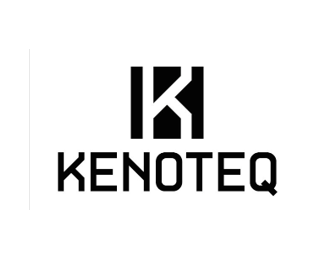
Kenoteq
Based in the UK, Kenoteq offers an unfired building eco-brick, K-Briq, made from 90% recycled construction materials and demolition waste.
123Fab #20
1 topic, 2 key figures, 3 startups to draw inspiration from

The digitization of Human Resources
The Covid-19 pandemic and the resulting lockdown period have redefined work patterns and employee behavior. With remote working becoming the new norm during lockdown, the number of remote workers has significantly increased. While 30% of employees surveyed worked remotely at least part of the time before the pandemic, Gartner analysis reveals that post-pandemic, 41% of employees are likely to work remotely at least some of the time. Other trends resulting from the current situation are also reshaping HR management, such as the increased focus on employee well-being and safety, the increase in contingent work, and the increased focus on employee engagement and productivity data.
These trends have forced HR teams to rethink corporate hiring, performance, experience, and management strategies, primarily through the adoption of integrated talent management software systems. If the digitization of HR is not something new, the pandemic has certainly accelerated a profound transformation in the way large companies convey their culture and values and ensure knowledge transfer.
The integration of digital tools into HR management has 3 main benefits for companies: 1) the automation of processes, reducing the time spent by HR teams on repetitive tasks 2) an enhanced employee experience, increasing employee satisfaction and well-being 3) the opportunity to use this freed-up time to rethink corporate HR strategies.
Covid-19 has created new business opportunities for HR tech startups that are now positioned in 4 fields:
- Digital employee onboarding, cross-boarding, and off-boarding: digital onboarding tools are a great solution to save time on administrative topics, engage employees through personalized integration journeys, and accelerate employee learning curves.
- Digital employee training and knowledge transmission: companies can transmit employee knowledge and skills through digital soft skill peer-to-peer coaching tools for white-collar workers and AR/VR training for blue-collar workers.
- Real-time employee engagement monitoring: companies can track employee performance and engagement through data processing and AI to improve productivity and employee well-being.
- Digital hiring tools, powered with AI to match candidate profiles and shortlist resumes based on the required skills, roles, and expertise level.
The integration of Artificial Intelligence into HR processes appears promising, especially to hire, engage, and retain candidates and employees. Yet, the technology has not reached its full potential and effective applications are still very limited: AI algorithms are still struggling to effectively match human skills to job descriptions because they do not fully capture and understand the human parameters and specifics of hiring standards.
2 Key Figures
1,549 HR tech startups
in the world, according to AngelList
Market size expected to reach $10bn by 2022
According to Markets and Markets, the global HR software market size was valued at $6.5bn in 2017 and is expected to reach $10bn by 2022.
3 startups to draw inspiration from
This week, we identified three startups that we can draw inspiration from: Carbon Clean, Woodoo and Kenoteq.

365talents
365talents is a French startup that develops an artificial intelligence SaaS solution for HR management including strategic workforce planning, internal talent marketplace and upskilling.

Skillup
Skillup is considered as the new Tripadvisor for professional training hosting over 20k training sessions, aiming to help HR services to find the adequate training for employees.

Zapitc
Based in the UK, Zaptic is a startup that creates a connected worker platform providing job instructions for frontline operation teams.
123Fab #19
1 topic, 2 key figures, 3 startups to draw inspiration from

Green Hydrogen – Water Electrolysis for a greener future
Hydrogen (H2), alongside renewables and natural gas, could play a key role in the energy transition by fostering the decarbonization of industries, with the versatility to provide mobility, power systems, heat and industrial services. Substituting polluting fossil fuels with hydrogen — which emits water only when burned – could significantly reduce greenhouse gas emissions and stave off climate change.
Although hydrogen is a very low-carbon energy, it does not exist naturally on earth and is mainly produced from a range of more or less environmentally friendly chemical sources and processes. There are commonly three types of hydrogen: grey, blue and green.
- Grey hydrogen is produced by chemical reactions – steam methane reforming and coal gasification – and by the use of carbon-intensive fossil fuels (natural gas, oil and coal).
- Blue hydrogen is produced the same way as grey hydrogen, but the main difference is that it has a lower carbon footprint. This is because hydrogen uses carbon capture technologies that prevent the release of CO2 and allow the captured carbon to be stored and reused in industrial processes. Blue hydrogen is more expensive than grey hydrogen.
- Green hydrogen is produced by the electrolysis of water, which uses an electric current to break apart water molecules (H2O) into hydrogen (H2) and oxygen (O2). If the electrolysis is realized using renewable electricity (solar PV or offshore wind turbines), the resulting hydrogen is the cleanest variety, producing zero carbon emissions.
The global hydrogen production is dominated by grey hydrogen: according to the International Energy Agency (IEA), 96% of the hydrogen manufactured in the world is “grey”, while less than 0.1% is produced by water electrolysis. This is mainly due to the lower price of grey hydrogen production compared to blue and green hydrogen. The IEA estimates the price of grey hydrogen at around €1.50 per kilo – the main cause being the price of fossil fuels – and between €3.50 and €5 per kilo for green hydrogen. The three most critical factors for the high cost of green hydrogen are 1) the limited and costly capacity of electrolysis at the moment, 2) the high price of green electricity used in the electrolysis process and 3) the costs for safe and clean transportation.
The widespread adoption of green hydrogen remains extremely slow, but the future of clean H2 could be bright. Major players are taking action to stimulate R&D around green hydrogen production, transportation and industrial applications. The European Commission, for instance, strongly believes in the prospective use of green hydrogen to decarbonize heavy industries and transportation, as demonstrated by the adoption of the European Green Deal in January 2020 to support innovation in clean hydrogen and low-carbon resources. The Covid-19 crisis has introduced a new impetus: France and Germany plan to collaborate and invest €7bn and €9bn respectively in green hydrogen R&D projects. Large corporate companies, including Shell, Airbus and Chevron, are also seizing the opportunity to invest in clean hydrogen technologies and applications.
The market is still extremely young, and there is still room for progress. Startups are positioning themselves either in the improvement of hydrogen storage, transportation and distribution, or in the development of new applications (fuel cells for vehicles, industrial use cases), or in the development of new alternatives for H2 production and electrolysis methods (such as alkaline, Polymer electrolyte membrane (PEM) or solid oxide electrolysis).
2 Key Figures
645 hydrogen fuel startups
in the world, according to Startup Insights
Market size expected to reach $2.28bn by 2027
According to PRNewswire, the global green hydrogen market size was valued at $787 million in 2019 and is expected to reach $2.28bn by 2027.
3 startups to draw inspiration from
This week, we identified three startups that we can draw inspiration from: Enapter, Hyon and PowerUP Energy Technologies.

Enapter
Based in Germany, Enapter makes highly efficient green hydrogen generators with scalable electrolysers (Anion Exchange Membrane) to replace fossil fuels.

Hyon
Hyon is a Sweden-based startup that develops and delivers turn-key solutions for the complete hydrogen value chain, from production to utilization, for the maritime sector.

PowerUp Technologies
PowerUP is a US startup that provides clean and portable energy by delivering a hydrogen fuel cell backup generator solution, which can be used for various use cases in transportation.
123Fab #18
1 topic, 2 key figures, 3 startups to draw inspiration from

Green Hydrogen – Water Electrolysis for a greener future
Hydrogen (H2), alongside renewables and natural gas, could play a key role in the energy transition by fostering the decarbonization of industries, with the versatility to provide mobility, power systems, heat and industrial services. Substituting polluting fossil fuels with hydrogen — which emits water only when burned – could significantly reduce greenhouse gas emissions and stave off climate change.
Although hydrogen is a very low-carbon energy, it does not exist naturally on earth and is mainly produced from a range of more or less environmentally friendly chemical sources and processes. There are commonly three types of hydrogen: grey, blue and green.
- Grey hydrogen is produced by chemical reactions – steam methane reforming and coal gasification – and by the use of carbon-intensive fossil fuels (natural gas, oil and coal).
- Blue hydrogen is produced the same way as grey hydrogen, but the main difference is that it has a lower carbon footprint. This is because hydrogen uses carbon capture technologies that prevent the release of CO2 and allow the captured carbon to be stored and reused in industrial processes. Blue hydrogen is more expensive than grey hydrogen.
- Green hydrogen is produced by the electrolysis of water, which uses an electric current to break apart water molecules (H2O) into hydrogen (H2) and oxygen (O2). If the electrolysis is realized using renewable electricity (solar PV or offshore wind turbines), the resulting hydrogen is the cleanest variety, producing zero carbon emissions.
The global hydrogen production is dominated by grey hydrogen: according to the International Energy Agency (IEA), 96% of the hydrogen manufactured in the world is “grey”, while less than 0.1% is produced by water electrolysis. This is mainly due to the lower price of grey hydrogen production compared to blue and green hydrogen. The IEA estimates the price of grey hydrogen at around €1.50 per kilo – the main cause being the price of fossil fuels – and between €3.50 and €5 per kilo for green hydrogen. The three most critical factors for the high cost of green hydrogen are 1) the limited and costly capacity of electrolysis at the moment, 2) the high price of green electricity used in the electrolysis process and 3) the costs for safe and clean transportation.
The widespread adoption of green hydrogen remains extremely slow, but the future of clean H2 could be bright. Major players are taking action to stimulate R&D around green hydrogen production, transportation and industrial applications. The European Commission, for instance, strongly believes in the prospective use of green hydrogen to decarbonize heavy industries and transportation, as demonstrated by the adoption of the European Green Deal in January 2020 to support innovation in clean hydrogen and low-carbon resources. The Covid-19 crisis has introduced a new impetus: France and Germany plan to collaborate and invest €7bn and €9bn respectively in green hydrogen R&D projects. Large corporate companies, including Shell, Airbus and Chevron, are also seizing the opportunity to invest in clean hydrogen technologies and applications.
The market is still extremely young, and there is still room for progress. Startups are positioning themselves either in the improvement of hydrogen storage, transportation and distribution, or in the development of new applications (fuel cells for vehicles, industrial use cases), or in the development of new alternatives for H2 production and electrolysis methods (such as alkaline, Polymer electrolyte membrane (PEM) or solid oxide electrolysis)
Process mining, neo-ERPs… – How can Artificial Intelligence power the next level of enterprise process automation?
IT Enterprise process automation is not something new: it began in the 1960s with the automation of white-collar work made possible by the invention of computers. Since then, the global adoption of digital technologies has transformed business process management through the integration of ERP (Enterprise Resource Planning) and other applications, but has stagnated at the basic level of screen scraping and data collection.
Enterprise automation now refers to any technology by which a manual process or procedure is performed with minimal assistance – the goal being to optimize the level of human interaction by making machines perform the repetitive manual tasks. Automatable tasks and processes exist across all business functions (Sales, Logistics, Accounting, etc.) with different levels of complexity and power of automation. Some repetitive and rule-based tasks require only basic automation while more complex and interactive tasks require AI-powered automation.
In fact, the most advanced Robotic Process Automation (RPA) systems can only automate repetitive tasks, that account for 10% to 20% of business processes. The increasing advances of Artificial Intelligence (machine learning and deep learning systems, Natural Language Processing, image analysis and predictive analytics), Internet of Things and Blockchain could take automation to the next level by creating new possibilities and benefits for enterprise automation: a next generation of neo-ERP players is emerging, challenging traditional players.
Those challengers focus on providing three types of services:
- Detecting automatable processes with digital twins and process mining tools: companies need to understand their underlying processes in order to optimize them and find opportunities to improve efficiency. In particular, process mining tools could identify trends and patterns to analyze process optimization performances.
- Automating business processes with cognitive automation tools: every company collects a large volume of raw data that needs to be structured into actionable information to be relevant. Cognitive automation tools could bring a high level of automation with better KPIs across the different business functions.
- Integrating with workflow automation solutions, which includes all automated processes in the different business functions. Integration solutions (iPaaS or cloud-based integration softwares) are particularly interesting for companies that do not wish to build in-house tools.
Enterprise automation looks promising on paper. Yet, the transition remains bumpy as integrated automation applications are still expensive and difficult to implement – it could take several years before complex automation tools are fully adopted. In particular, the emerging adoption of full automation in SaaS (at the expense of on-premise softwares) is questionable in terms of financial management (subscription based models) and cybersecurity. It is essential to balance the need for increased process management and the impact of full SaaS on the enterprise’s IT environment.
Nevertheless, the Covid-19 outbreak has urged corporates to adopt digital tools to enable business continuity and remote work. According to Appdynamics, 81% of IT leaders state that Covid-19 has created the greatest technology pressure their organization has ever faced. For this reason, the current situation could first trigger the adoption of detection tools (process mining and digital twins), that could lead to more automation.
2 Key Figures
255 process automation startups
in the world, according to Startup Insights
Market size expected to reach $12.6bn by 2023
According to Markets and Markets, the global digital process automation market size was valued at $6.8bn in 2018 and is expected to reach $12.6bn by 2023.
3 startups to draw inspiration from
This week, we identified three startups that we can draw inspiration from: Logpickr, Hypatos & Celigo.
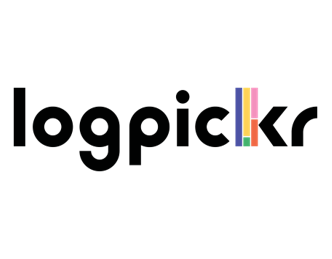
Logpickr
Logpickr is a French startup that combines Process Mining with Artificial intelligence to provide smart business process analysis and optimization.

Hypatus
Hypatos is a German process automation startup that applies natural language processing and deep learning to speed up document processing for financial functions.

Celigo
Based in the US, Celigo creates an iPaaS integration platform that allows cloud-based applications to work together both for IT and business users.
123Fab #17
1 topic, 2 key figures, 3 startups to draw inspiration from
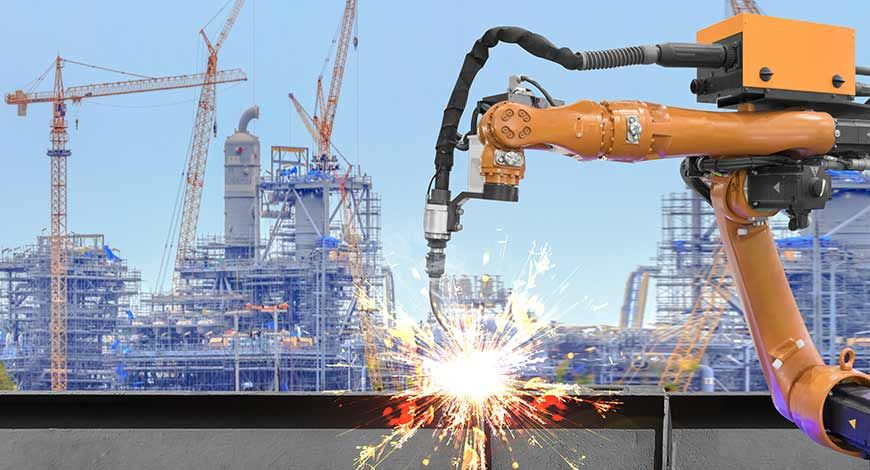
The slow adoption of robotics in Construction
Back in 1987, Japanese academics, robot manufacturers and contractors were already working on the first documented research about automated construction processes. Since then, construction robotics never stopped improving. ‘Robotics’ refers to the use of machines that have an automated component: construction robots are designed to help and assist humans in their day-to-day work on construction sites. The most common construction robots are stand-alone, fixed machines used for repetitive and precise applications (e.g. articulated arms). Then, there are collaborative robots (or cobots) that directly interact with human workers and perform a specific task – such as lifting heavy loads. A third type of robots are exoskeletons which are connected to the human body to support them in difficult tasks (e.g. for heavy-duty). Finally, the autonomous guided vehicles and autonomous mobile robots can navigate either onboard (e.g. camera or laser based) or in external environments (e.g. drones).
A good example of cobot is SAM (Semi-Automated Mason), the bricklaying robot designed by Construction Robotics. SAM works alongside the mason and assists him/her with the repetitive and arduous lifting and placing of bricks. The mason remains in charge of the setup and responsible for final quality. SAMs can lay 250 to 300 bricks per hour, improving by up to 4 times the number of bricks than a man could lay when working alone. With a retail price of $500,000, the firm that SAMs users can expect an ROI within three years, thanks to a reduction of labor costs by at least 30%, low maintenance costs and an expected lifespan of about 10 years.
Construction Robotics are not the only ones coming with an attractive value proposition for construction firms. Robotics companies and start-ups put forward financial benefits, productivity gain and safety as the main commercial arguments. Indeed, labor costs usually represent between 20% and 50% of a construction project total cost – and 38% of it could be automated according to a McKinsey study, leading to a potential cost saving of 20%. Although the initial investment is high, robotics firms claim that in the long-term, it is more cost-effective to purchase robots: in the United States, the average robot cost (including maintenance) is 4 times lower than labor wage stated McKinsey. Moreover, robotics is a guarantee of accuracy. Its work is extremely precise and predictable, thus meeting deadlines and avoiding delay expenses is easier. Another advantage of robotics is the minimization of injuries and providing a safer workplace. For instance, autonomous vehicles can operate independently in hazardous areas.
However, robotics in construction is still not widely adopted and there is under-automated when compared to other manufacturing industries. The construction industry has been classified by McKinsey as « in middle range for automation ». There are several reasons for slow adoption rate of robotics in this industry:
- The complexity of construction sites – unique end-product, unpredictable weather – leads to non-repetitive tasks and involving judgement
- The unpredictable and ever-changing environment: the flexibility required for construction works is for still difficult to automate. As previously said, only 38% of the time spent on unpredictable physical work in construction could be automated with current technologies compared to a 70% for predictable physical work (e.g. in automotive).
- The need for technology to improve: although there are plenty of promising innovations, improvements of the current technology are needed in the adaptability to real-time variability. Moreover, on construction sites there are hundreds of tasks and multiple phases. As there is no multitask-programmed robot, many construction firms remain reluctant to integrate robots to their regular activities.
- The significant investment costs: Investing in robotics involves high initial capital investment, including R&D. Although in the long term it is said to be beneficial, it remains an obstacle for many companies.
- Legal and safety issues: even though robots should reduce the risks on construction sites, the appropriate allocation of risk is a concern for all the construction participants. There is a need specific regulation in the use of robotics on sites. This issue is starting to be addressed (e.g. the compulsory use of Building Information Models in UK since 2019). The cyber risk also needs to be considered.
- Jobs implications: If 40% of current construction jobs would be “at high risk” of automation by the 2030s, according to a 2018 PwC study, the transition will take some time and the major challenge for workers will be to not be replaced by robots but to learn to work side by side with them. A specificity of the construction industry is the importance of craftsmanship, that adds value to projects. Replacing all human workers by robots would mean taking away the quality-assessment aspect that current robots cannot provide. Thus, collaborative robots may be the most appropriate solution as they are designed to work alongside human counterparts instead of entirely replacing them. Cobots will contribute to improve productivity by carrying out tasks that would otherwise be considered busywork or for employees.
The current labor-shortage in construction – A 2019 survey by Associated General Contractors of America and AutoDesk reported that 80% of firms find it difficult to hire labor force – will surely weight into the scale of construction robotics rise. Thanks to 5G and other technology improvements, better connectivity will make it easier for multiple robots to co-operate and better understand the environment they are operating in. Compared to other heavy industries, job automation in construction is rather low but it is poised to increase faster than them in the coming decades. According to a PwC study, in the late 2020s, job automation potential in construction is 16% versus 19% on average for all industry sectors but the automation potential for construction in the mid-2030s is forecast to be 39% versus 30% for all sectors.
2 Key Figures
77 construction robotics startups
in the world, according to a Tracxn query.
Market size expected to reach $460M by 2026
According to Verified Market Research, the global Construction Robotics market size was valued at $212 Million in 2019 and is expected to reach $460 Million by 2026.
3 startups to draw inspiration from
This week, we identified three startups that we can draw inspiration from: Construction Robotics, Kewazo and SuitX.

Construction Robotics
New-York based company, Construction Robotics is dedicated to developing affordable, leading-edge robotics and automation equipment for the construction industry.

Kewazo
Based in Munich, Kewazo develops smart robotic elevators for industrial and construction sites with focus on scaffolding. Kewazo solutions intend to improve construction logistics via data analysis and robotics.

SuitX
The US-based startup SuitX builds a robotic exoskeleton for medical and industrial markets, designed to reduce the amount of strain on the knees and quadriceps.
123Fab #16
1 topic, 2 key figures, 3 startups to draw inspiration from

NLP and NLU : from understanding to processing natural language
The increase in smart devices usage in all areas and industries, resulting in the rise of artificial intelligence and cloud-based solutions, have driven the progress and adoption in Natural Language Processing (NLP) technologies.
Natural Language Processing is a branch of artificial intelligence that uses machine learning algorithms to interpret and use spoken and written human language. These AI algorithms are able to analyze the utterance syntax and semantics to determine the meaning of human communications, and consequently allow to provide appropriate and comprehensive answers.
Some NLP algorithms only focus on determining what is literally said, which implies converting conversational text into structured data, but others are more sophisticated and powered with Natural Language Understanding (NLU). NLU is a major sub-topic of NLP that allows computing machines to understand the human language in all its complexity: besides semantic and syntax analysis, NLU involves a pragmatic analysis that enables machines to detect intent and sentiments in human utterances and some NLU solutions integrate noise analysis to better understand the context in which the text is captured. The powerful feature of reasoning and adaptive learning developed with NLU makes it possible for machines to determine precisely what the user is trying to achieve through each request, provide a complex answer and follow-up.
For instance, if my request is “I would like to book a flight from San Francisco to Paris on December 1st, 2020.”. The program will understand that my objective is to book a plane ticket from one location to another, with 3 query conditions: place of departure, place of arrival and date. The result should be a list of flights meeting the criteria. I could narrow the search by asking “Do you know if there is any direct flight with AirFrance?” to which the program should answer: “There is one direct flight with AirFrance from San Francisco to Paris departing at 3:15 and the lowest flight fare is €576.” To conclude, NLU algorithms are able to deal with several queries at the same time, but also engage in real and complex conversational back and forth with the users (which is usually very limited with current voice assistants and chatbots).
NLP and NLU technologies are developing rapidly thanks to the increasing awareness about the advantages and benefits of human-to-machine communication and sentiment analysis in several sectors, including healthcare, industry, mobility and customer services. Yet, real-life applications remain very limited: AI algorithms are still facing difficulties in fully capturing and understanding human languages. The technology has not fully reached its expected potential, but the market is already very dense with large companies and emerging startups competing to develop the most viable and effective NLP solution.
2 Key Figures
398 NLP startups
received funding for a total amount of $3.3bn according to a Crunchbase query.
Market size expected to reach $26.4bn by 2024
According to Markets and Markets, the global Natural Language Processing market size was valued at $10.2bn in 2019 and is expected to reach $26.4bn by 2024.
3 startups to draw inspiration from
This week, we identified three startups that we can draw inspiration from: Inbenta, Agamon, Logically.

Inbenta
Inbenta is a US-based startup that provides a comprehensive automated customer service solution powered by AI, machine learning and NLP.
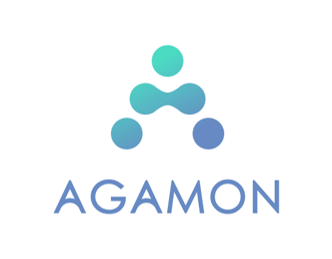
Agamon
Based in the US, Agamon develops an AI-powered healthcare platform that converts clinical text into structured data, by using an advanced approach to NLU.

Logically
Logically is a UK-based startup that raised £2.5M in July 2020 to develop NLP technologies to fight against misinformation from fake news to state propaganda.
123Fab #14
1 topic, 2 key figures, 3 startups to draw inspiration from

Will Covid-19 propel urban air mobility?
The 2020s are expected to be the decade of the Urban Air Mobility (UAM) revolution. Self-flying vehicles and drones hovering over cities have already been tested. A growing number of large transportation and aerospace companies – including Uber, Airbus and Hyundai – as well as venture-backed startups are racing to launch the first electric vertical take-off and landing aircraft (eVTOL). And there seems to be an emerging consensus that the electrification of aviation will be the next fundamental transportation disruption, including in urban areas. But will it actually disrupt urban mobility?
Air transport for passengers and goods will undeniably be part of the urban mobility landscape, especially in large urban areas and megacities where there is a need to reduce congestion, commute times and pollution. The first prototype flights for autonomous electric flying vehicles and drones are already underway, made possible by multiple breakthrough innovations:
- Electric propulsion is a major technology used to fly eVTOL with no aircraft noise and emissions during take-off and landing. Current aircraft prototypes are equipped with electric motors powering multiple rotor blades that generate lift.
- Most Urban Air Vehicles (UAV) are electric and battery-powered and improvements in battery and energy technologies, in particular lithium-ion batteries, have been crucial in the rise of electromobility, including air electromobility.
- Advances in hydrogen storage and fuel cells technologies, which are an alternative to battery technologies, are likely to make UAV more sustainable.
- AI technologies will facilitate traffic management systems, but mostly help make aircrafts autonomous.
- Finally, production techniques are quite similar to those of the electric automotive and aviation industries, with high quality standards and R&D to find the best technologies and materials. The materials used in the production of UAV have to be particularly lightweight and resistant, like carbon-fiber composites and superalloys.
However, these technologies are still under development. For instance, the use of electric batteries brings a new set of challenges, including uncertainty about the weight of the batteries and charging times and the imbalance of electric grids. Aircrafts’ electric rotors need a lot of energy to operate, which means that they have to be equipped with several high-energy batteries that are particularly heavy and need a couple of hours to charge.
A number of technological challenges remain, but also many regulatory and governance concerns regarding the use of flying vehicles in cities:
- Noise and turbulence in cities: rotating blades produce noise and wind nuisance during take-off and landing. Because of the noise generated, cities and populations can be against flying vehicles.
- Airspace management: the adoption of UAV will require airspace regulations to avoid accidents, infractions, drifts as well as visual pollution. Flying vehicles aim to be autonomous in the long term, but some aircrafts need pilots, which means that flying such a vehicle will require training and a flight licence.
- Safety is one of the biggest concerns for UAM. There are many aspects to consider, including the aircraft and weather conditions.
- Public acceptance is another challenge for UAM advocates: will people trust autonomous flying vehicles and are they willing to accept airspace congestion?
- Take-off and landing infrastructures are critical for success: it is not only about the vehicles themselves, but how they fit in a Smart City design.
- The business model for people transportation has to be demonstrated: should this type of mobility remain fully private or subsidized by the city? As the current prototypes can carry less than 10 people, can these small eVTOL shuttles be financially viable?
To conclude, there is still a lot of work to be done before the sky fills up with autonomous electric vehicles, especially in terms of autonomy and security. Most cases are currently focusing on autonomous delivery vehicles as a means of testing in a lower-risk environment, before launching a passenger flight. The market is still extremely young and production and exploitation costs are still very high. This type of transport will thus be intended for a social elite at first. The democratization of UAM is however not fully certain yet, as the other urban mobility means, including micro mobility, increasingly and smoothly integrate into the existing ground transportation networks. The price to be paid for each minute saved with urban mobility (still to be confirmed if there is a cumbersome take-off/landing process and if the infrastructure is insufficient) remains an unanswered question today.
2 Key Figures
110 Urban Air Mobility projects identified worldwide
almost half of which are in Europe
Market size expected to reach $15.2bn by 2030
According to Markets & Markets, the global urban air mobility market was valued at $5.3 billion in 2018 and is expected to reach $15.2 billion by 2030.
3 startups to draw inspiration from
This week, we identified three startups that we can draw inspiration from: Windcopter, NaviFly and H55.

Wingcopter
Wingcopter is a German startup creating eVTOL aircrafts dedicated to commercial and humanitarian applications.

NaviFly
Based in Ireland, NaviFly develops an air traffic control platform that organizes the drone airspace and enables their operations and logistics within urban areas.

H55
H55 is a swiss startup developing certified electric propulsion and battery solutions to make aviation clean, quiet, efficient and ultimately autonomous.
123Fab #13
1 topic, 2 key figures, 3 startups to draw inspiration from

Is Hydrogen the fuel of the future?
Electromobility is a crucial topic these days, resulting from the need to tackle climate change and Battery Electric Vehicles (BEV) are receiving a lot of attention, boosted by the rise of Tesla and Elon Musk’s popularity. But the adoption of BEV is limited by battery technologies: uncertainty about battery life and charging times, the imbalance of electric grids and the shortage of raw materials — such as lithium which is a scarce material – are challenging the rise of BEV.
Another type of Electric Vehicle is catching up, using compressed hydrogen gas to generate electricity and power electric motors, called Fuel Cell Electric Vehicles (FCEV). The key difference with Battery Electric Vehicles is that FCEV are not powered by a battery that needs to be charged from an external power source. Indeed, hydrogen vehicles can produce their own electric power by filling up the fuel cell with hydrogen. Then occurs a chemical process of reverse electrolysis: the reaction of hydrogen with oxygen produces electrical energy, water and heat – which also means that FCEV do not generate any greenhouse gas emissions. Once converted into electricity, the energy can either be used to power the vehicle or be stored and used when needed.
Hydrogen fuel cell technology brings a new perspective in the development of electromobility. While Battery Electric Vehicles take several hours to charge, hydrogen vehicles take only a few minutes, which makes them highly operational and avoids breaking users’ driving habits. However, this technology also brings a new set of challenges:
- Hydrogen is flammable and an uncontrolled hydrogen reaction with air oxygen can cause an explosion
- Hydrogen (H2) is a particularly small molecule that makes metals brittle and is therefore likely to leak from polymer tanks, which means that new composite materials have to be created to make tanks safe
- Hydrogen is a low energy fuel, meaning that a large quantity is needed to power the vehicle. For this reason, the gas has to be compressed and stored in heavy and cumbersome high-pressure tanks
Some large companies and startups are developing new materials and fuel cell technologies to make FCEV safer, but there are also some players positioning themselves on the hydrogen technologies and services market.
Even though the technologies are yet to be improved, hydrogen appears to be a groundbreaking alternative power source for vehicles, with many noticeable benefits such as reduced noise and air pollution during charging. However, the development and adoption of hydrogen vehicles remain very slow due to the lack of existing refueling infrastructure: at the end of 2019, there were only 432 hydrogen refueling stations worldwide, of which 330 were open for public vehicle filing according to Fuel Cell Works. Consequently, the FCEV demand and production remains very low and the production is not yet to be industrialized, which is why the market prices of FCEV are still very high (around $80,000 according to BMW).
Given the positive impact on the environment and the charging-time benefits compared to BEV, the hydrogen vehicle market could grow significantly in the next decades, especially for large transport systems (trucks, buses, trains and air transportation). Major companies in the automotive and transportation space, as well as hydrogen producers, have invested heavily and joined forces to develop hydrogen-related technologies and democratize hydrogen as the next generation of fuel.
2 Key Figures
70 fuel cell startups
are focusing on developing solutions for the Industry and Mobility sectors.
Market size expected to reach $42bn by 2026
According to Allied Market Research, the global hydrogen fuel cell vehicle market was valued at $652 million in 2018 and is expected to reach $42 billion by 2026.
3 startups to draw inspiration from
This week, we identified three startups that we can draw inspiration from: HyPoint, Ergosup and HySiLabs.

HyPoint
HyPoint is a US-based startup developing the next generation of zero-emission and fuel-efficient hydrogen fuel cells for the aerospace industry and urban air transportation market.

Ergosup
Based in France, Ergosup is developing an innovative process for the on-site production of high pressure hydrogen for the refueling of hydrogen-powered vehicles.
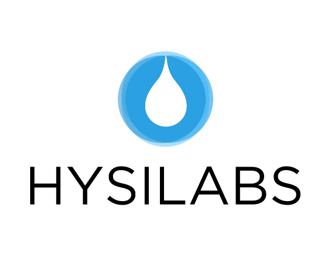
HySiLabs
HySiLabs is a French startup delivering a unique solution to facilitate hydrogen transportation, storage and delivery for the industry and mobility sectors.

